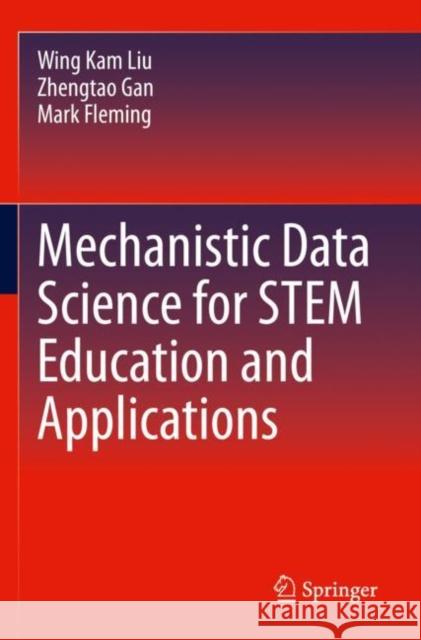Mechanistic Data Science for STEM Education and Applications » książka
Mechanistic Data Science for STEM Education and Applications
ISBN-13: 9783030878344 / Angielski / Miękka / 2022 / 276 str.
Mechanistic Data Science for STEM Education and Applications
ISBN-13: 9783030878344 / Angielski / Miękka / 2022 / 276 str.
(netto: 210,83 VAT: 5%)
Najniższa cena z 30 dni: 212,02
ok. 22 dni roboczych
Dostawa w 2026 r.
Darmowa dostawa!
This book introduces Mechanistic Data Science (MDS) as a structured methodology for combining data science tools with mathematical scientific principles (i.e., “mechanistic” principles) to solve intractable problems. Traditional data science methodologies require copious quantities of data to show a reliable pattern, but the amount of required data can be greatly reduced by considering the mathematical science principles. MDS is presented here in six easy-to-follow modules: 1) Multimodal data generation and collection, 2) extraction of mechanistic features, 3) knowledge-driven dimension reduction, 4) reduced order surrogate models, 5) deep learning for regression and classification, and 6) system and design. These data science and mechanistic analysis steps are presented in an intuitive manner that emphasizes practical concepts for solving engineering problems as well as real-life problems. This book is written in a spectral style and is ideal as an entry level textbook for engineering and data science undergraduate and graduate students, practicing scientists and engineers, as well as STEM(Science, Technology, Engineering, Mathematics)high school students and teachers.
This book introduces Mechanistic Data Science (MDS) as a structured methodology for combining data science tools with mathematical scientific principles (i.e., “mechanistic” principles) to solve intractable problems. Traditional data science methodologies require copious quantities of data to show a reliable pattern, but the amount of required data can be greatly reduced by considering the mathematical science principles. MDS is presented here in six easy-to-follow modules: 1) Multimodal data generation and collection, 2) extraction of mechanistic features, 3) knowledge-driven dimension reduction, 4) reduced order surrogate models, 5) deep learning for regression and classification, and 6) system and design. These data science and mechanistic analysis steps are presented in an intuitive manner that emphasizes practical concepts for solving engineering problems as well as real-life problems. This book is written in a spectral style and is ideal as an entry level textbook for engineering and data science undergraduate and graduate students, practicing scientists and engineers, as well as STEM (Science, Technology, Engineering, Mathematics) high school students and teachers.











